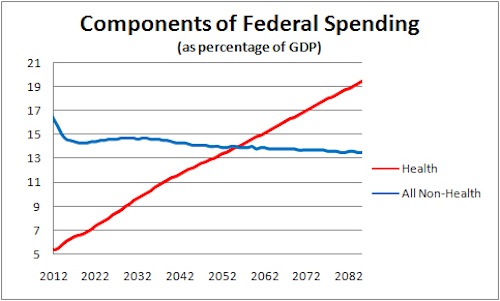
The Gang of Six, a coalition of Democratic and Republican legislators who might do something and the economy will collapse or not
Remember when we gave the government a monopoly on force and authorized various representatives to collect and disburse resources on our behalf? It’s possible that was a mistake. Either that or it’s business as usual on the reeking shores of the Potomac, and the leaders of both parties are holding our national anxiety level hostage for whatever advantage they can derive without pushing us to real crisis. It’s difficult for the layperson to decide just how seriously to take our present negotiations over the debt ceiling. Economists agree that a default would wreak awful damage on the economy, except the markets haven’t really responded. Congress raises the limit pretty much every year, except for the last two weeks the President has been walking out of meetings and Eric Cantor has whined like a young lady who needs a nap. The GOP refuses to consider any revenue increases even as they accuse the President of intransigence, and Harry Reid is a wiener. So whom, to paraphrase the Joker, do you trust?
Personally, I hold to the stolid axes of the graph. Numbers don’t lie, and a graph is like totally made of numbers. The first step in addressing our debt problem is figuring out where it came from to properly assign blame. Only then can we, you know, shame one party into agreeing with the other. The man on the street will tell you that ever since this whole national debt thing got started in 2008, it’s been government bailouts that have put us in the hole. Over at the Atlantic, James Fallows administers this necessary corrective:
 It turns out that tax cuts and land wars in Asia are super expensive, and in the last decade we opted to do three of them at once. So obviously, the solution is to let the Bush tax cuts expire—an event scheduled for last year—and stop trying to explode the Middle East into prosperity. Problem solved, right? Except the soothing bottom line of this chart is based on an eight-year projection in which not only those wars, cuts and bailouts do not exist, but also the Economic Downtown never happened. It’s a guess at the future economy of an alternate past, and the simple explanation it offers is therefore maybe not airtight.
It turns out that tax cuts and land wars in Asia are super expensive, and in the last decade we opted to do three of them at once. So obviously, the solution is to let the Bush tax cuts expire—an event scheduled for last year—and stop trying to explode the Middle East into prosperity. Problem solved, right? Except the soothing bottom line of this chart is based on an eight-year projection in which not only those wars, cuts and bailouts do not exist, but also the Economic Downtown never happened. It’s a guess at the future economy of an alternate past, and the simple explanation it offers is therefore maybe not airtight.
You can tell it’s fake because it makes you feel better. By inverting the same principle, we can conclude that Yuval Levin’s diagnosis of our fiscal pathology must be completely accurate, since it is terrifying as hell. Levin argues that all this talk of discretionary cuts and $1.2 trillion savings packages is useless, since the overwhelming force behind the federal debt is health care spending. As if to prove his point by giving everyone a heart attack, he includes the following chart:
As you can see, sometime around 2053 the money we spend on keeping decaying corpses off the streets will eclipse the sum expense of all other functions of government. It’s the scariest red line you’ve ever seen, until you consider that it starts next year and continues into 2085. That’s the year that the oldest Baby Boomers will turn 140, by which time their robotic exoskeletons will need constant upkeep. Levin’s argument that health care spending is the central issue in deficit reduction is compelling, but it is also suspect. In concluding that we must repeal Obamacare to address the current debt problem, he happens to coincide with the only concrete position the Republican Party has advanced since 2009. His cost projection is predicated on the US maintaining the same spending policies for the next 70 years. And, as with Fallows’s alternate future economy, the Y axis of his graph relies on our ability to predict Gross Domestic Product three generations ahead.
So these charts are more terrifying and less clarifying. They suggest that, for all the dire assertions of economic collapse and political gamesmanship, neither party fully understands the consequences of what we’re doing now, much less what would happen if we did something else in the future. To adopt the poker metaphor that has somehow survived Obama’s “don’t call my bluff” admonition: no player in this game is certain what another is holding; he can’t decide which play to make in any case, and nobody is even sure what the stakes are. Meanwhile, we have to figure the hand from our seat on the rail.
It is possible that we’re playing for pretzels, here, and come August everything will be fine. It’s also possible that we are the American generation to witness the simultaneous collapse of our economic and political systems. Running a country is hard, and history is littered with proof that you can screw it up. The future, too, is strewn with possible shattered empires. And in the present, our elected representatives argue fruitlessly from their incommensurable timelines, like ghosts who cannot touch one another. It’s a house of horrors, and we get to wonder how well the imagineers put it together as we pass through on a slow-moving train. Don’t worry, though—we’ll pay for it either way.





I am glad that I observed this web blog , just the right information that I was looking for! .